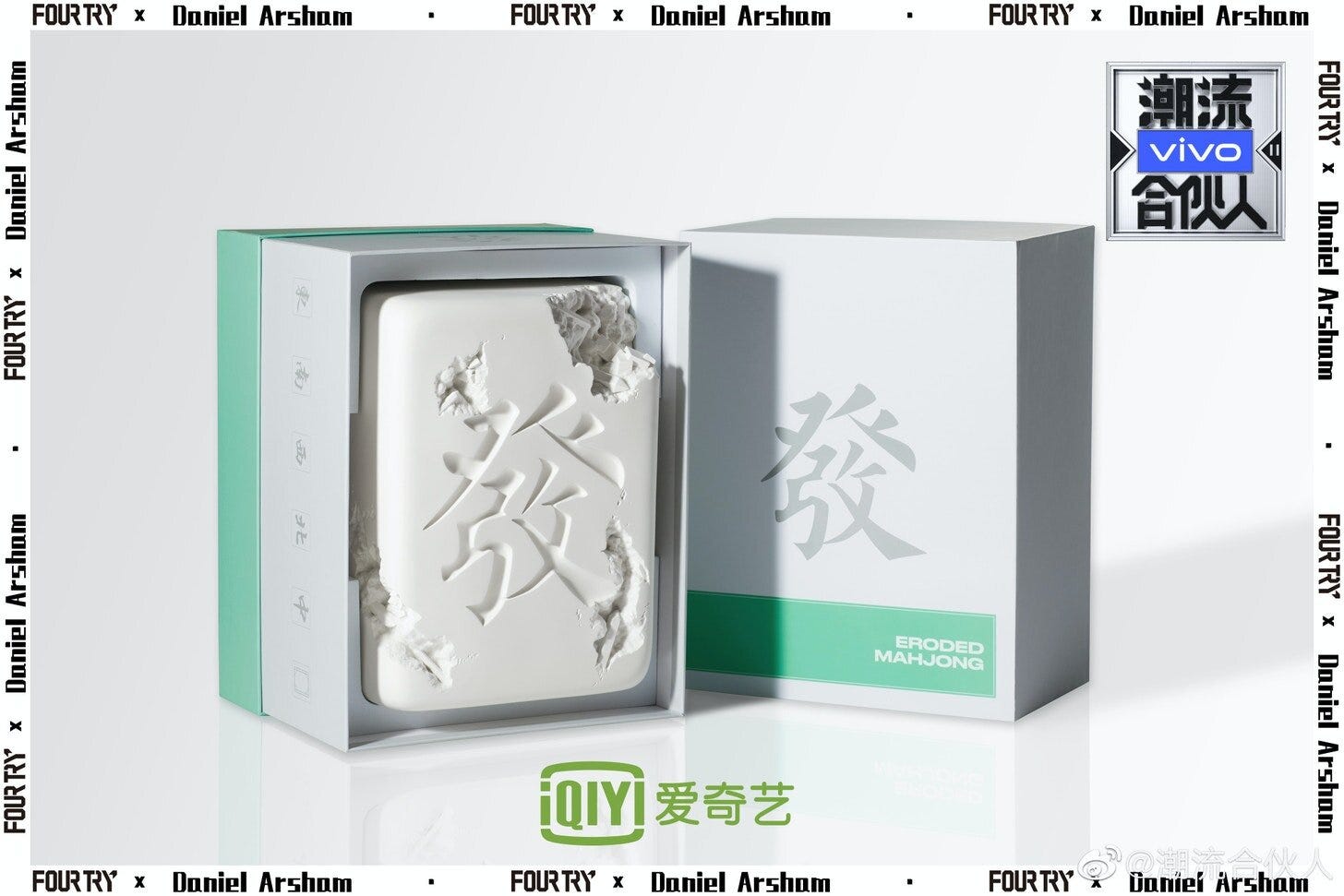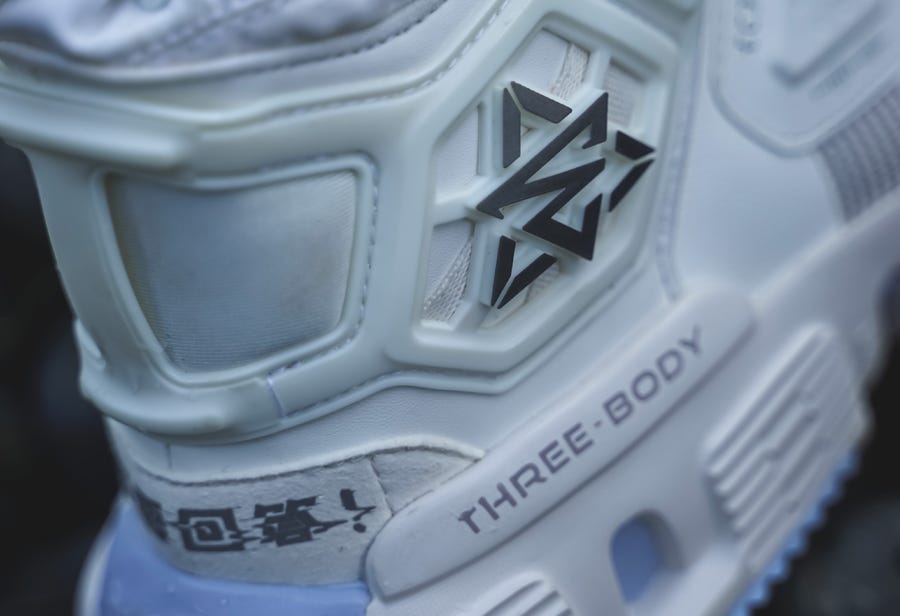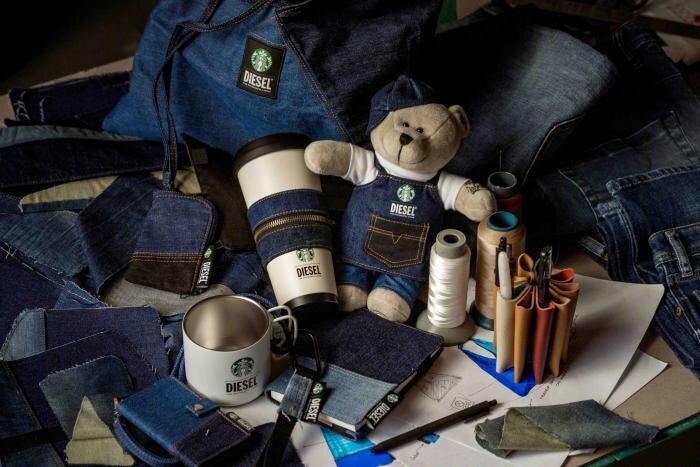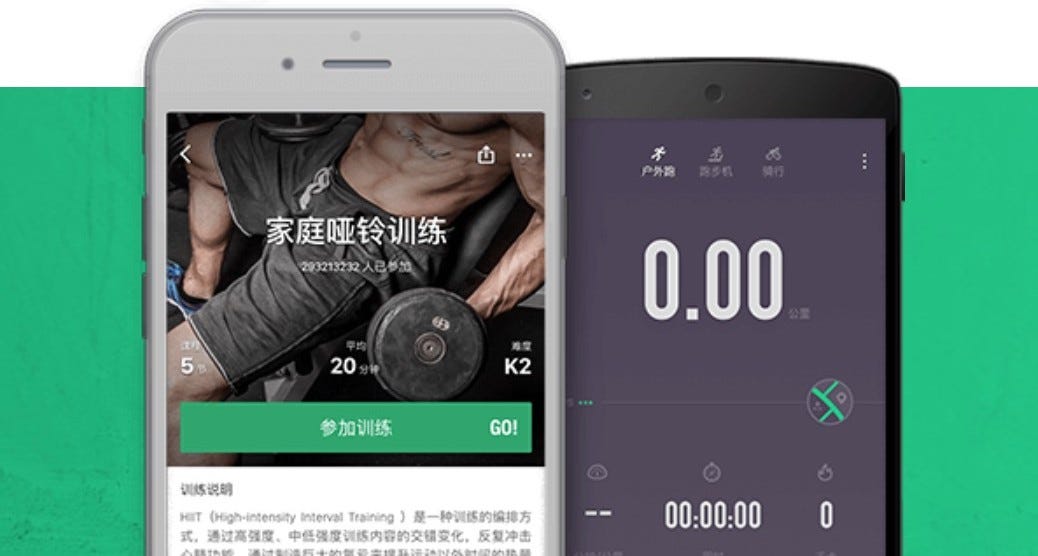December 2020 Best of Brand Collaborations
Plus: At-home fitness rising (and rising), a boozy tribute to pandemic life, and our News in China roundup.
Published three times per week, the Content Commerce Insider newsletter highlights how brands create content to drive revenue, globally. If you have received our newsletter from a friend or colleague, we hope you will subscribe as well and follow us on LinkedIn and Instagram.
As collaborations become a must-have marketing tool to appeal to China’s Gen Z and millennial consumers, brands must seek out new sources of innovation for groundbreaking offerings. Content, in the form of popular IP, has been emerging as a key source of inspiration for brand partnerships that can leverage existing fan bases to boost consumption.
So with that in mind, here is our list of the best brand collaborations from December 2020:
Top Pick: Daniel Arsham x Fourtry
For the second season of its hit streetwear-oriented reality show “Fourtry” (潮流合伙人), which premiered on December 4, video streaming platform iQiyi has sought to capitalize on the huge appeal of brand collaborations with a Chinese flair. While the first season was set in Tokyo’s famed style district of Harajuku and emphasized international designers, this year the cool southwest city of Chengdu serves as the setting of “Fourtry,” with a major effort made to appeal to tastes for domestic “national trend” (guochao) products that draw from China’s rich cultural traditions.
IQiyi established three categories of brand collaborations for the “Fourtry” brand in the new season: Fourtry by X (for original designs), Fourtry Crossover (for collaborations with leading players in the youth culture space), and Fourtry Selected, (for partnerships with high-end streetwear brands).
Aiming even higher, iQiyi developed an innovative art and commerce partnership with contemporary American artist Daniel Arsham that further enhances the cultural quotient of the “Fourtry'' brand. The artist unveiled an installation, titled "Bronze Fa," at the recent Innersect streetwear convention in Shanghai, which will be housed at the “Fourtry Space'' experiential retail store in Chengdu.
In addition, Arsham produced a limited-edition series of five products in collaboration with “Fourtry” for sale in China, including an art piece, mah jong set, keychain, necklace, and rug, all incorporating elements of Chinese art traditions, for a unique merging of heritage and modernity that has drawn interest from Gen Z and millennial cultural consumers.
The collaboration is Arsham’s first with a Chinese content platform, though he has deep experience in working with brands and reimagining their signature products through the lens of architecture and performance, with previous partnerships with international brands such as Rimowa, Adidas, Pokémon, and Porsche.
Five more noteworthy collaborations from December 2020:
Hey Tea x Rong Bao Zhai x Digiway
The trendy drinks chain Hey Tea is one of China’s most cutting-edge brand collaborators, and did not disappoint with its offerings for the big streetwear convention Innersect, which was held in Shanghai in early December. Hey Tea partnered with the time-honored stationery brand Rong Bao Zhai and artist Digiway on a limited-edition gift box that fused traditional Chinese art and pop culture imagery to celebrate the pastime of tea drinking.
Audi x Ling Cage: Incarnation
Audi followed up on its partnership with Bilibili’s hit animation series “Ling Cage: Incarnation” (灵笼) with a Christmas film starring its first virtual ambassador, the show’s character Bai Yuekui, to more deeply align the auto brand with the series’ powerful IP and appeal to its youthful audience. In the film, Bai Yuekui is shown driving the futuristic AI: Trail concept car through the post-apocalyptic landscape of “Ling Cage” as she sets out to mark the holiday in the only way she can. But as she stops to lay presents at a memorial site, the ruins that surround her are transformed into a vibrant and gleaming city full of festive cheer, and she receives the ultimate Christmas gift: the reappearance of a special someone along with a brand new Audi A3 Sportback, perfect for racing through the city streets.
361° x Three Body Problem
Sportswear meets science fiction in the collaboration between Chinese brand 361° and the Hugo Award-winning IP of Liu Cixin’s “Three Body Problem.” Released on December 26 (the 361st day of the year), for 361’s brand promotion on Tmall, the product line included high-tech shoes and futuristic clothing adorned with a Trisolaris insignia.
KFC x W8VES
Fried-chicken chain KFC is a frequent brand collaborator, and recently hooked up with “W8VES,” Bilibili’s new reality show about running a rap label (a follow-up to its recent hit “Rap for Youth” (说唱新世代)), promoting a single put out by the studio on its K-Music app and giving users a chance to win “W8VES” merchandise by requesting that the song play at KFC restaurants. KFC also opened a “W8VES” pop-up in Beijing, where customers could also win products through the purchase of any of KFC’s new “Kaifengcai” self-heating menu items.
Starbucks x Diesel
As part of its extensive Christmas marketing campaign in China, Starbucks partnered with the Italian fashion brand Diesel on a limited-edition collection of denim products with the theme of “dressing differently” with the promise of uniqueness. Each of the items — from tote bag to coffee cup sleeve to the overalls on the “bearista” teddy — uses different scraps of denim fabrics, so that no two pieces will be identical, thus appealing to the Gen Z and millennial desires for individuality and sustainability.
Mentioned in today’s newsletter: Absolut, Adidas, Alibaba, Arc’teryx, Audi, Bilibili, Diesel, Hey Tea, iQiyi, KFC, Keep, Lululemon, myShape, Nike, Rimowa, Pokémon, Porsche, Starbucks, Tencent, TikTok, Youku.
Luxury Look: At-Home Fitness Is the One to Watch in 2021
by Avery Booker
Traditional luxury had a big year in China in 2020, powered by a strong domestic consumption trend that saw previously globe-trotting Chinese tourist-shoppers make more of their high-end purchases closer to home due to the Covid-19 pandemic. As Bain & Company noted last month, the luxury goods market in mainland China is expected to have grown by 48% last year, reaching a whopping RMB 346 billion ($53.4 billion) owing largely to this inward turn in high-end shopping. The firm also expects this trend to continue into 2021, keeping China on track to become the world’s largest luxury market by 2025.
This shift has upended the strategy employed by many luxury brands over the past decade, which is to say viewing their mainland China stores as glorified showrooms, and optimizing stores in tourist hotspots such as Tokyo, New York, and Paris to sell to Chinese travelers. Those days are seemingly over, and now it is critical for global brands to see their Chinese outlets not simply as marketing vehicles but rather as crucial sales points.
Last year, we saw this manifested by Burberry’s partnership with Tencent on a “social retail” store, in the launch of a massive Arc’teryx Shanghai flagship, and through Nike’s inaugural “Rise” concept in Guangzhou that integrated online and offline. But there are signs that the domestic, inward-facing shift in luxury consumption in China is filtering far beyond fashion and powering a huge wellness and fitness trend that could dwarf the West’s in terms of market size.
Recently, CCI profiled the Youku show “Sleep Tight,” which highlighted the epidemic of sleep deprivation faced by China’s urban residents and provided Youku parent Alibaba with numerous opportunities to sell sleep-related products. In addition to products, services, and programs devoted to sleep, another area in which we have seen a flood of investment in China is fitness. When the Covid-19 pandemic took hold in China at the beginning of 2020, at-home fitness became a hot topic among the savviest adopters of content-commerce marketing in China, with Lululemon, Nike, and others offering streamed workouts for those stuck at home under strict lockdown orders.
And while much of China has managed to return to a post-coronavirus sense of normalcy, at-home fitness appears to be here to stay and is evolving quickly. Already, China has its own “Peloton killer” in the form of the Xiaomi Yesoul V1-Plus Beast smart exercise bike, and startup myShape has developed a smart mirror nearly identical to the Lululemon Mirror. Now, Chinese companies that are developing both software and hardware are attracting millions in investment and helping clear leaders emerge in the lucrative fitness and wellness industries.
This week, Chinese fitness brand Keep closed a $360 million Series F financing round led by Softbank’s Vision Fund, which included additional funding from existing investors such as Tencent. This values the six-year-old firm at roughly $2 billion, and will help it continue to diversify its already wide range of offerings, which currently include everything from an app with fitness tracking and livestreamed workouts to smart bikes, snacks, and apparel.
Unlike the luxury industry, which frequently ends up in the crosshairs of China’s central government, the wellness and fitness markets in China are being actively promoted by Beijing as part of an ongoing “national fitness” campaign. Given this backdrop, we can only expect to see this boom in investment and marketing budgets to continue well beyond 2021.
Brand Film Pick: Absolut’s Global Tribute to Pandemic Life
In November, the Pernod-owned vodka brand Absolut announced singer Jolin Tsai as a new celebrity ambassador, just ahead of launching a global campaign, “In Our Spirit,” starring Tsai alongside American actress Tessa Thompson, gamer Ricki Oritz, and British musician MNEK.
The brand film for the campaign plays on the Chinese love of ACG (anime, comic and games) content and brings it to a world stage, creating avatars for each of its stars in their 2D element: Tsai livestreams her TikTok-style dance moves, Ortiz becomes a gaming character, MNEK performs in a virtual concert, and Thompson is an active social media presence. The film celebrates a way of life that young people globally have become accustomed to, while also looking forward to a future in which they will be able to come out from behind their screens to meet in real life.
News in English
China’s experience in e-commerce livestreaming holds lessons for the West, despite critical differences in retail environments and web development. MIT Sloan Management Review
The China Consumers Association lashed out at internet companies, claiming that “consumers are being squeezed by data algorithms and becoming the targets of technical bullying,” Reuters
As it prepares for a Hong Kong IPO anticipated to raise up to $5 billion, Kuaishou’s reputation as the short video platform of rural China is changing as it seeks to grow its audience and appeal to brands. Radii
And the upcoming listings of Kuaishou and Bilibili in Hong Kong will bring a bigger spotlight onto the e-commerce capabilities of Chinese video. SCMP
The peak travel season of the Lunar New Year holiday period in China may face restrictions as confirmed cases of Covid-19 are on the rise again. Sixth Tone
And the recent spike in coronavirus cases in the north China province of Hebei is casting doubts on the prospects of the 2022 Winter Olympics. SCMP
Inditex is planning to close up to 1,200 stores in China representing smaller brands such as Bershka, Pull&Bear, and Stradivarius in order to focus on bigger flagships. WWD
Luxury brands are going full speed ahead to celebrate the upcoming Year of the Ox with capsule collections and limited edition items. WWD
“Chaos and chronic inefficiency”: China’s much-ballyhooed digital transformation is proceeding more slowly than expected, with only 19% of companies citing the coronavirus as a driver for change. Campaign Asia
Tesla is seeking a design chief for China to develop cars tailored specifically to the local market. Reuters
We’ve Got China Covered
China Film Insider: Plagiarizing Director’s Film Pulled From China’s Silver Screens
Jing Daily: Dior Adds an Oriental Aesthetic to Its Chinese New Year 2021 Collection
Jing Culture & Commerce: What Should Museums Consider in a Digital Transformation?











